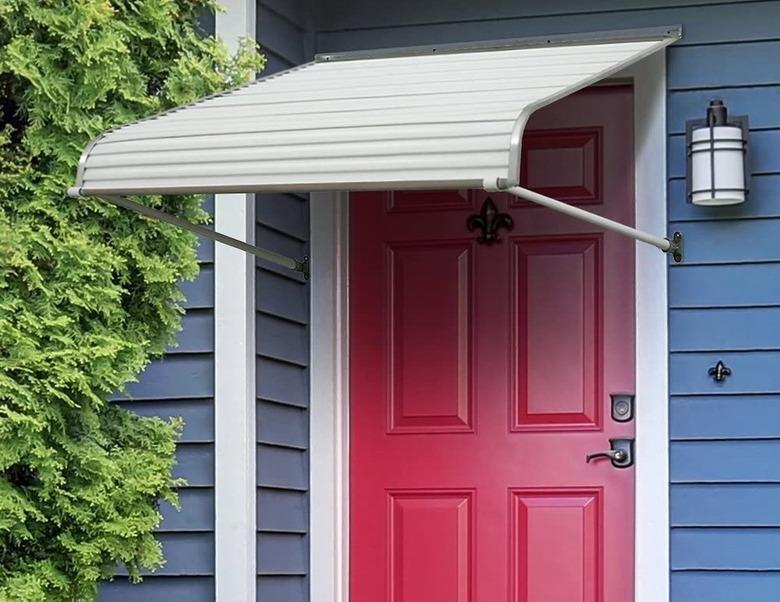How To Paint An Aluminum Awning
We may receive a commission on purchases made from links.
Aluminum awnings are a lightweight, long-lasting, and incredibly durable way to keep sunlight out of your home, reducing your energy bills while leaving you feeling cooler. But when the paint on your awning starts to wear, it can begin to look faded, shabby, and unattractive. Even worse, chipped, flaking, or cracked paint leaves the aluminum vulnerable to corrosion, which can eventually destroy your awning. Repainting your awnings can help improve their appearance and extend their life span.
Clean the Awning
Clean the Awning
Awnings get dirty after sitting outdoors all the time. If you paint directly on dirt and debris, your paint job won't just look bad — it will also flake off in no time. That's why it's important to clean the awning prior to painting. First, remove any planters, flags, or other decorations that may be secured to the awning to get them out of the way. Then, combine a mild dish detergent and water in a bucket and using an extendable scrub brush to gently remove any dirt or debris. Rinse the awnings clean with a hose.
If you notice any mold, moss, or mildew left behind, create a solution of 50 percent bleach and 50 percent water in a squirt bottle. Spray the solution on the growths and then gently scrub with a scrub brush before rinsing well to remove any bleach residue.
Prepare for Painting
Prepare for Painting
Use a 180-grit sandpaper to remove any cracked, peeling, or otherwise damaged paint. Sandpaper can also be used to smooth out any rough areas so they are even with the rest of the surface. While primer will usually adhere well to aluminum awnings, if the existing paint has a high-gloss finish, it will need to be gently sanded so the primer has something to which it can cling. Just gently and evenly sand the surface until it loses its luster. After sanding, go over the surface with a damp microfiber cloth to remove any remaining dust and then allow the awning to fully dry.
Use a Primer
Use a Primer
Primer will help ensure the paint will better last under the harsh outdoor weather conditions and will help reduce the number of coats of paint you will need, particularly if you intend to apply a lighter color on a darker awning. Tape off any areas beside the awning that you do not want to paint using a high-quality painter's tape. Lay a drop cloth underneath the awning to catch any drips.
Use an oil-based primer, spraying it evenly along the surface of the awning. Never use latex-based primer on aluminum since it contains ammonia, which can cause a chemical reaction with aluminum. This will ruin your paint job. Allow the primer to dry overnight before applying paint.
Apply Your Paint
Apply Your Paint
To make painting as easy as possible, use an acrylic paint designed for use on metal in an airless sprayer to avoid brush strokes and drips. Hold the sprayer about a foot away from the awning and apply the paint in long, even strokes, going side to side from the top down. Allow the paint to fully dry before applying a second coat.
Finally, apply an oil-based enamel topcoat to protect the paint from weather exposure and the metal from corrosion.
